Garden Glimpses: Beltane Beauties
The cold which had been such a feature of our early spring, and threatened to damage emerging buds and leaves, has continued in a less severe form into mid-spring, and has now become my friend. Normally by Beltane most of the narcissus have bloomed and faded, with just sporadic dots of color across the garden, but the extended period of below-normal temps this year has acted like a florist’s cold case, preserving these beauties well into May.
So I’ve still been cutting armloads for bouquets, and at my Daffodil Dinner in late April I graced the table with a massive grouping of 33 mixed narcissus, one each of the varieties then in flower (there are now more than 60 on the property, with bloom times staggered from early March into May).
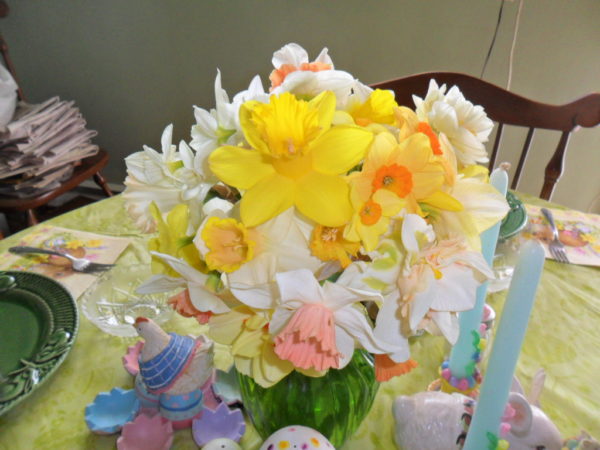
Many of the new varieties are fast becoming favorites, and the sandmound bed, in full sun, has been particularly lovely. I’m glad to have done more development of bulbs in the beds just outside the kitchen door and under the maple as well, but the variable return performance of other narcissus planted there in prior years tells me I may end up having to reorganize both areas. In their first year, they are all doing well, but so did the earlier plantings that are now blooming more sporadically, and it may be that the lower light conditions they’ll encounter after blooming, when the trees above have leafed out, is causing diminished returns. If so, they’ll have to be dug and replanted.
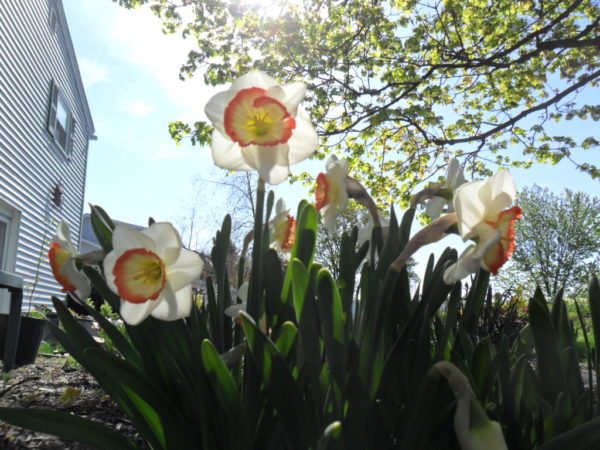
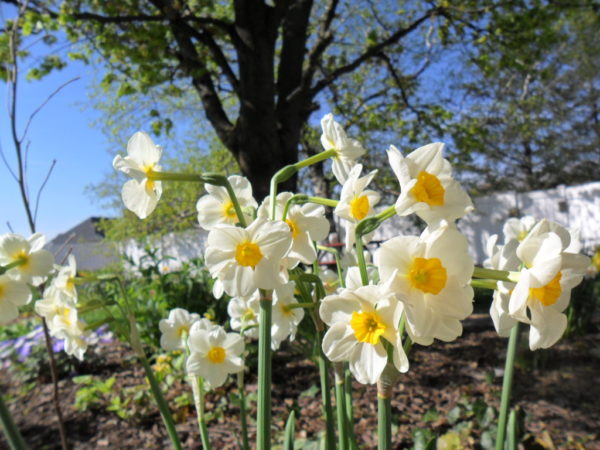
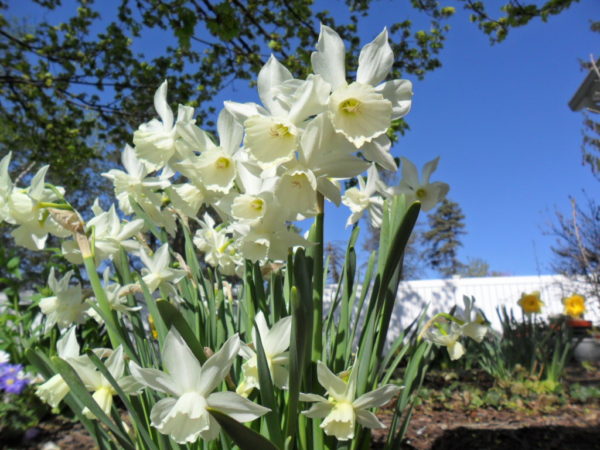
But for now, they’ve provided quite a show! Night Cap is a late-blooming narcissus, but well worth the wait, with snowy white petals ringing a cup that is more cream-colored, and lip-lined at its frilled edge with deep coral. Nearby, Cragford cranes its elongated, elegant necks to the sun, tipped with up to six miniature blossoms, half-dollar-sized, in sparkling white with bright medium-yellow shallow cups. Thalia is also in that area by the back stoop, though I have four plantings of this distributed throughout the garden, it being one of my all-time favorites. All-white Thalia is another multi-flowered bloomer, with three or four blossoms per stem, and sports frilled cups surrounded by matching petals that flare outwards in the center, then recurve dramatically inward to form pointy tips.
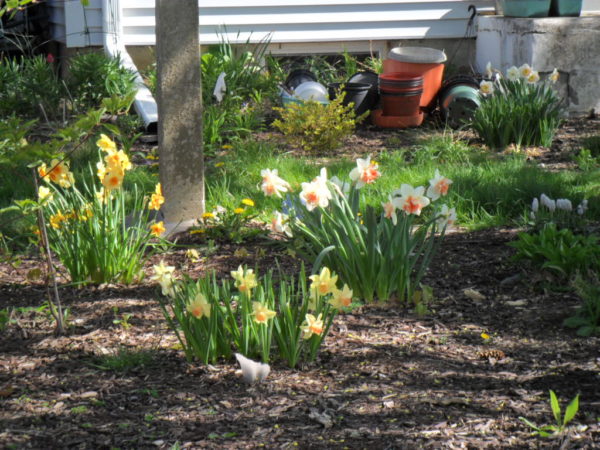
Under the maple proper I added a ring of narcissus around my young pagoda dogwood, which regrettably, has yet to bloom. But these daffs are picking up the color slack in magisterial ways!
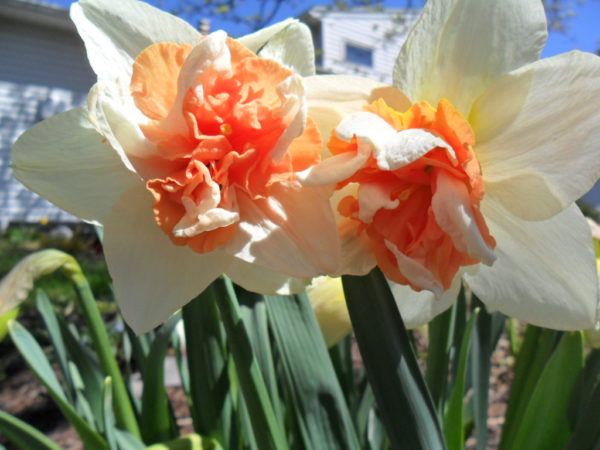

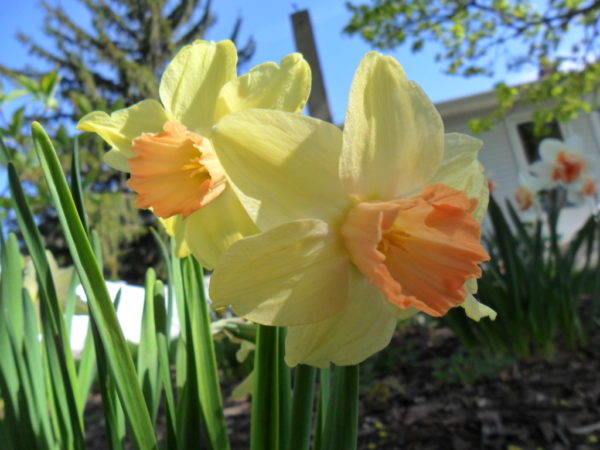
Candy Princess is the stunner in this group, with thick fluffy centers of coral pink slashed in a creamy white that matches its petals. Next to it is Kedron, with long slender stems topped by caramel-yellow blossoms studded with flat, deep orange cups. Another grouping of Thalia and a mass of Prototype completes the dogwood’s encirclement. Prototype is uniquely colored, with pale salmon cups backed by pale yellow petals, a winning combination I haven’t encountered elsewhere.
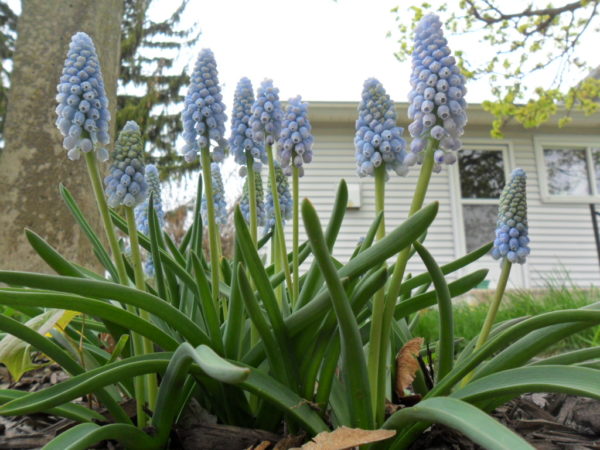
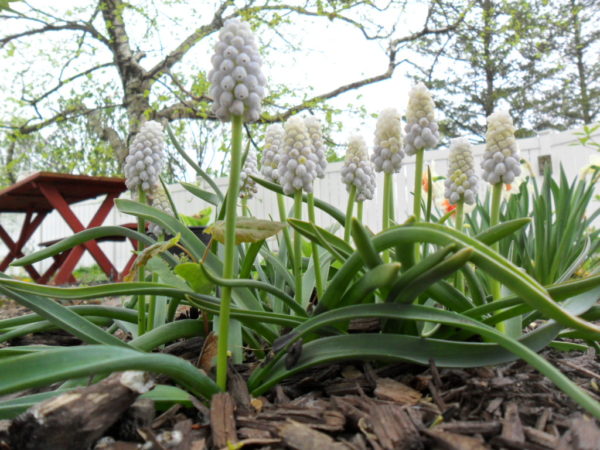
Also here are clusters of muscari bordering the path, likewise coming into bloom a bit late this year. Baby’s Breath is palest ice blue, succeeded by Siberian Tiger’s pure electric white, and rounded out with Ocean Magic’s tricolored schema, featuring a deep blue base like the ocean depths, gradually blanching to white at the tips, like sea-foam on waves.
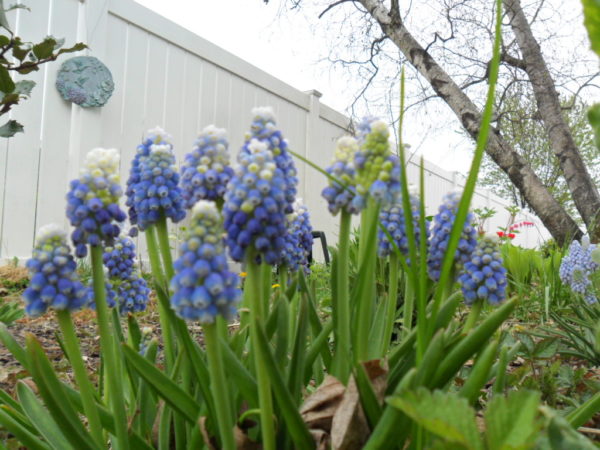
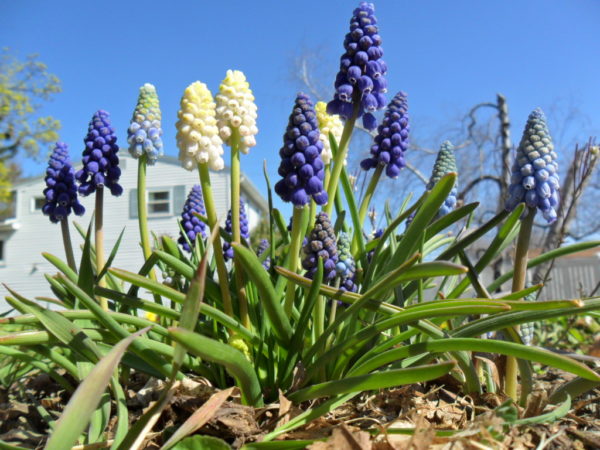
But the bed atop the sandmound, newly planted in its first year, is where most of the magic for 2022 happens. Fully ten new narcissus species are scattered across this bed, plus repeat plantings of Thalia and Tete-a-Tete, with borders of iris reticulata, mixed muscari, and fox grape.
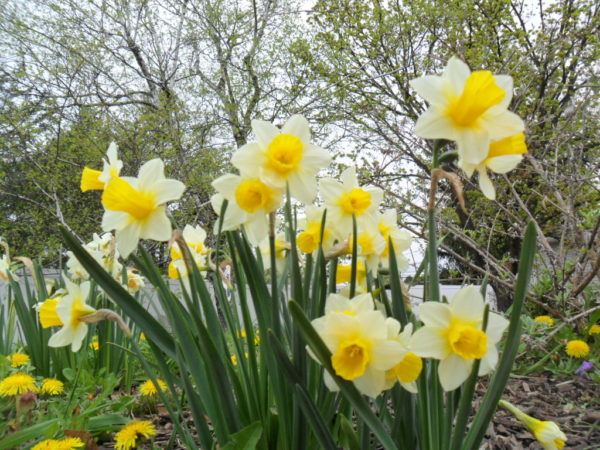
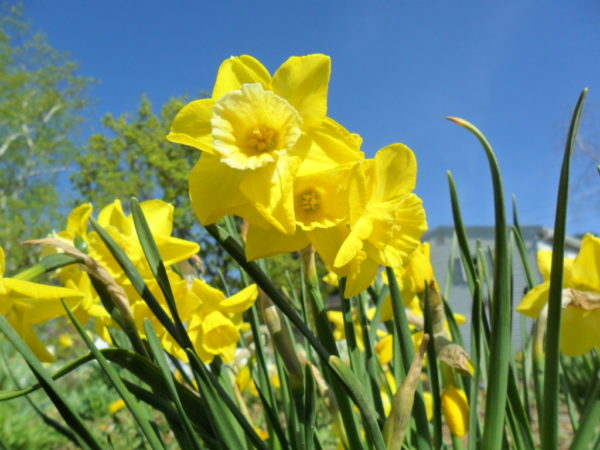
The rose paver seating area is bordered on three sides by daffodils now in their second year, a naturalizing mix of types which gives bloom for almost two months. And now to each side are clusters of new daffs, with Doll Baby, Moonlight Sensation, Golden Echo, Dialogs and Iwona to the west, while Hillstar, Faith, Orange Comet and a second planting of Tom Pouce adorn the east. In the front, on the north side, is a staggered row of mixed perennial groundcovers interspersed with smaller bulb plants, including a Rock Garden daffodil mix, snowdrops, muscari and the Uva-Vulpis, or Fox Grape.
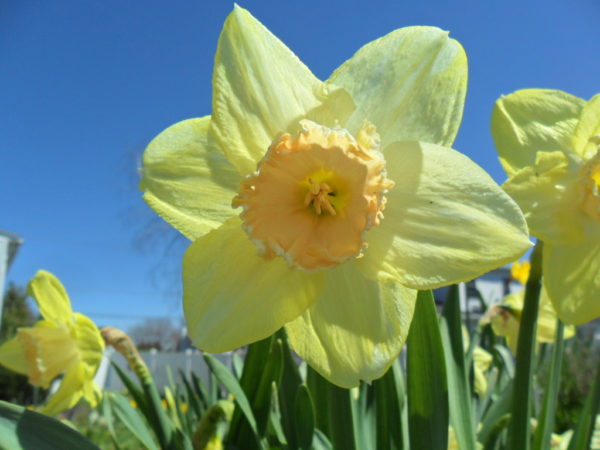
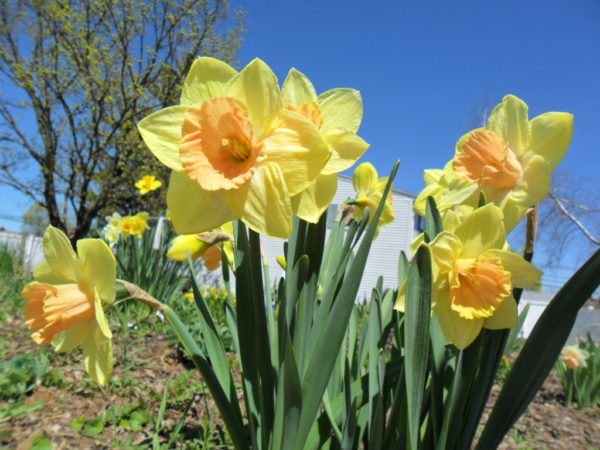
Golden Echo, Moonlight Sensation and Hillstar are all variations on a theme, with Golden Echo’s yellow trumpets that bleed into the base of white petals, Hillstar’s white-tipped pastel lemon trumpet leeching into vibrant yellow petals, and Moonlight Sensation’s pale lunar yellow blossoms. With Doll Baby, a cream-petaled variety centered with salmon pink cups, these are all smaller-flowered species, many of them with multiple blooms per stem.
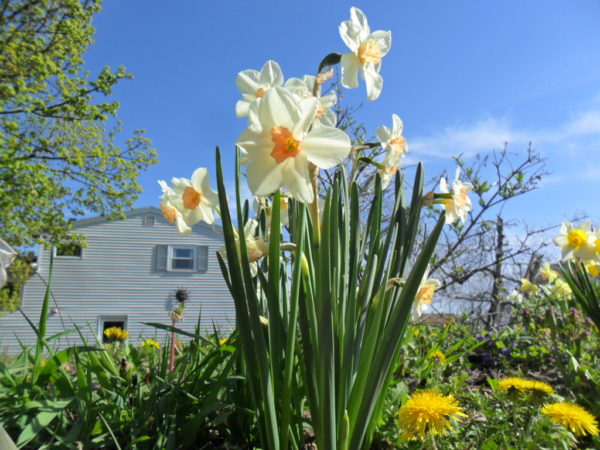

Dialogs is a larger blossoming narcissus, with faint yellow cups and a pale peach ruffle-edged trumpet lined in cream. Iwona is another pink beauty, of creamy white, semi-reflexed petals surrounding a medium-length apricot cup.
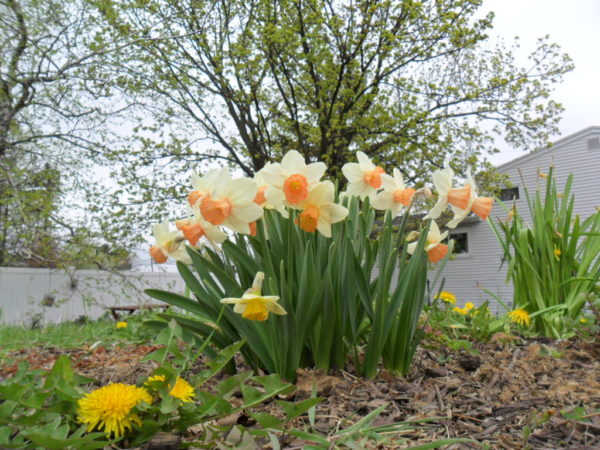
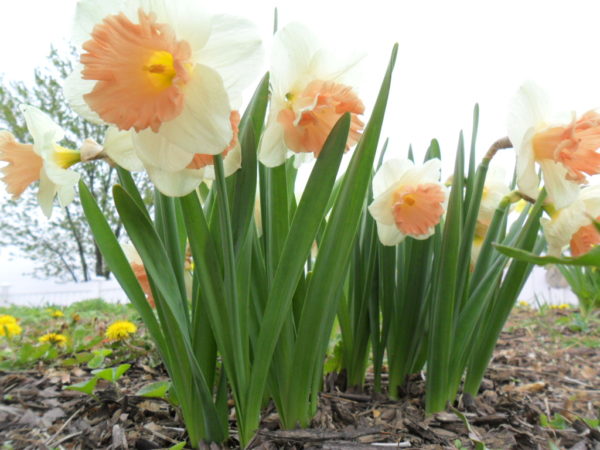
Tom Pouce’s color palette combines a coppery pink trumpet with pale yellow petals; I liked this so much last year that I bought another dozen, a rare repeat performer in the garden. Faith is another large-flowered variety, with dramatic ruffled salmon pink trumpets that flare at the end, ringed by eggshell white petals.
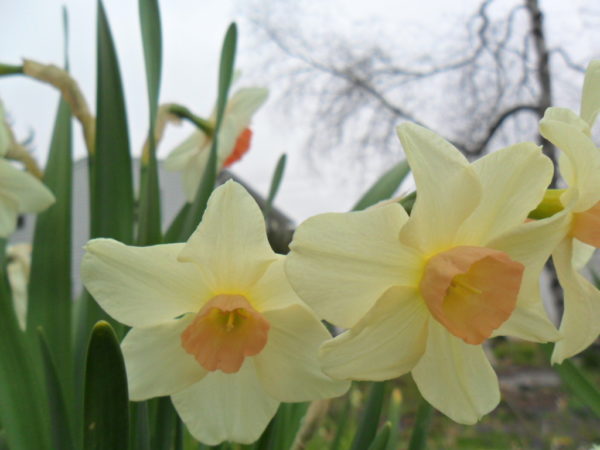

The Rock Garden daffodil mix came with at least a half dozen miniature narcissus in shades from pure white to deep yellow, and the muscari mix beside it runs the gamut from the traditional dark blue bluebells to paler blue and white strains. The snowdrops, Tete-a-tete daffodils and iris were early bloomers long since gone, but a pair of Thalia clumps fills in the bloom gap in the front row nicely, while Fox Grape provides visual interest. A fritillaria, its purple-chocolate blossoms are edged in bright yellow and downturned, dangling like so many carillon chimes.
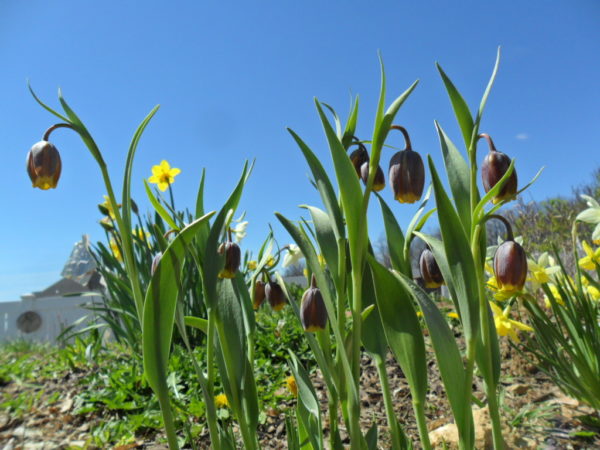
The cold which has extended the narcissus bloom time has also delayed some of the spring ephemerals in the shade garden, and other perennial plants and shrubs, including the lilac, normally in full array by May Day. But that just means these lovelies are still waiting to reveal themselves, as spring deepens toward summer. While we wait, relax in the new garden chairs on the sandmound seating area, and rest that Bellini or Mimosa on the new solar-patterned mosaic side table. It’s going to be a lovely show!

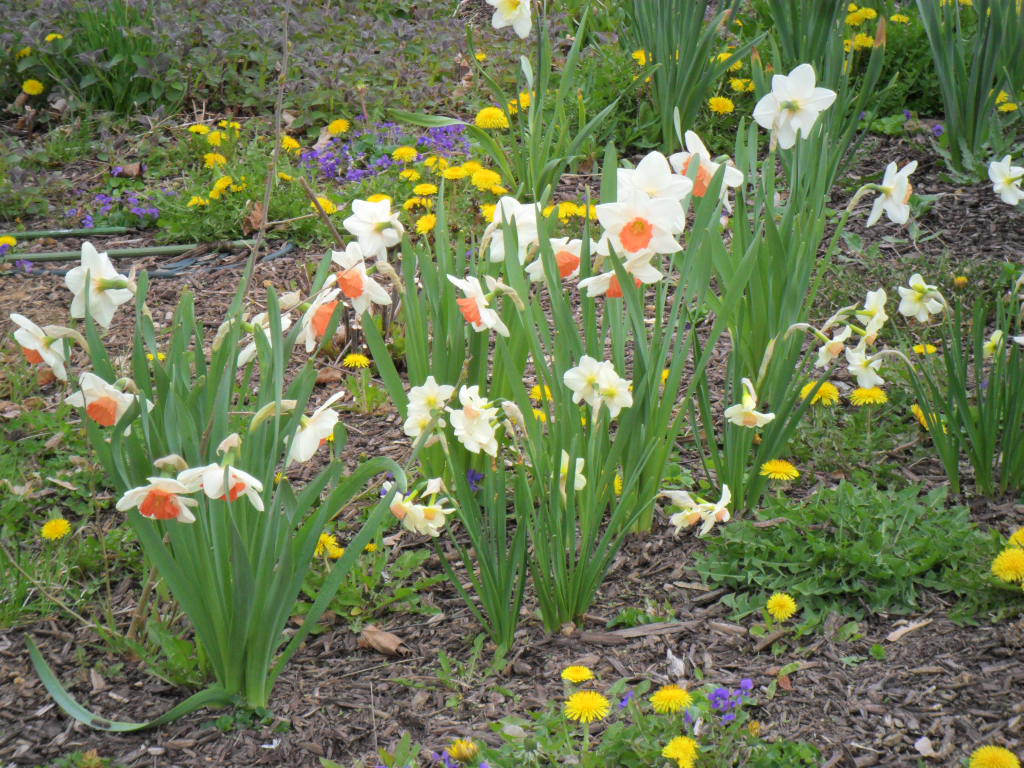

6 comments, add yours.
Judy
Daffodils are my favorite. In the Fall I will plant some Night Cap. I do not have anything like that. Love it.
Jacqueline Janes
Beautiful, Alex! Thank you again for sharing your garden. I like your garden shares as much as your astrological analyses of the times. The garden shares are always an immune booster. I am impressed with your vast knowledge of the flower garden –the timing for blooming, what goes with what, the care of the garden. yes!
Sandra Downing
just beautiful – thank you!
Sunsine
Lovely, great job! thank you for sharing!
Laurien
Enjoyed the photos so much, thank you! I think you have inspired me to give bulbs another go in my garden next year, some muscari at least. Hopefully it stops raining long enough for that to happen as it is still cool and wet here too in BC, Canada. Thanks again, Alex!
Emma Esperanza Acosta
It is quite a poet to describe the flowers of the garden thanks
Es todo un poeta para describir las flores del jardín gracias